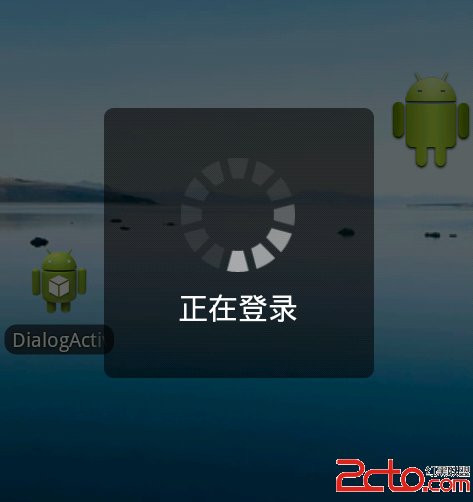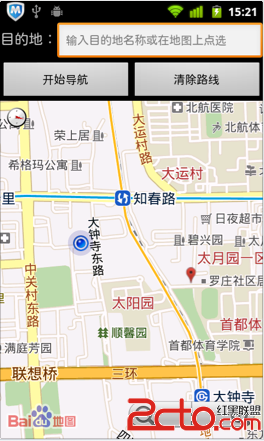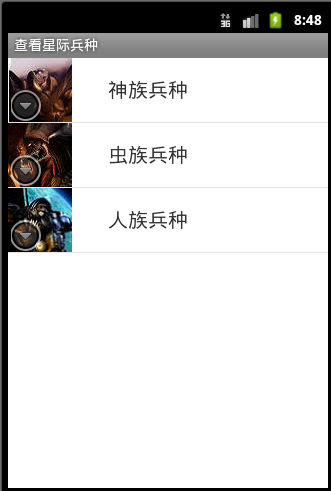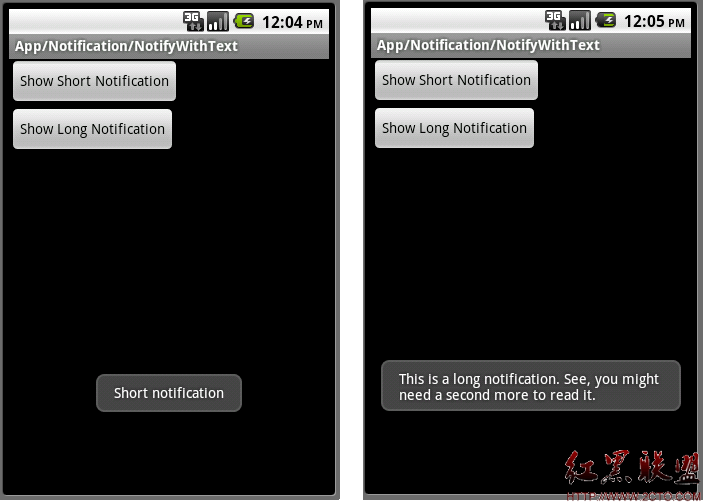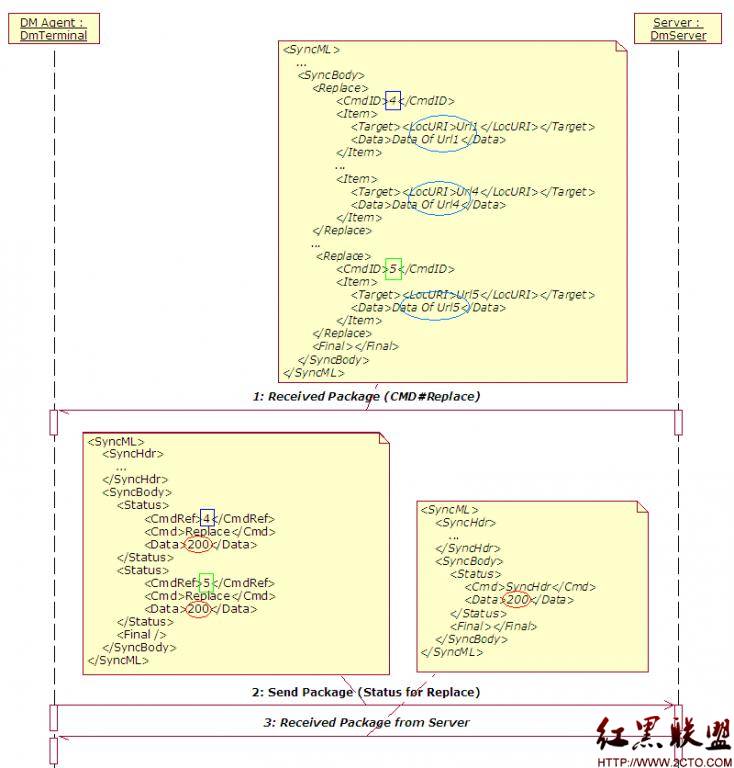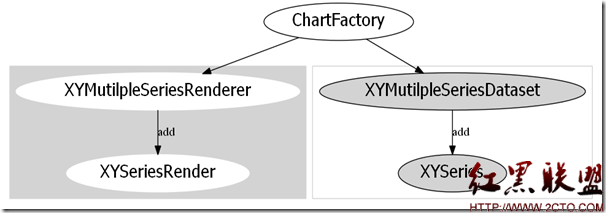Bitmap内存溢出问题
我们在编写Android程序的时候,我们总是难免会碰到OOM(OUT OF MEMORY)的错误。这里,我使用Gallery来举例,在模拟器中,不会出现OOM错误,但是,一旦把程序运行到真机里,图片文件一多,必然会出现OOM,我们通过做一些额外的处理来避免。
1.创建一个图片缓存对象HashMap dataCache,integer对应Adapter中的位置position,我们只用缓存处在显示中的图片,对于之外的位置,如果dataCache中有对应的图片,我们需要进行回收内存。在这个例子中,Adapter对象的getView方法首先判断该位置是否有缓存的bitmap,如果没有,则解码图片(bitmapDecoder.getPhotoItem,BitmapDecoder类见后面)并返回bitmap对象,设置dataCache 在该位置上的bitmap缓存以便之后使用;若是该位置存在缓存,则直接取出来使用,避免了再一次调用底层的解码图像需要的内存开销。有时为了提高 Gallery的更新速度,我们还可以预存储一些位置上的bitmap,比如存储显示区域位置外向上3个向下3个位置的bitmap,这样上或下滚动 Gallery时可以加快getView的获取。
Java代码:
public View getView(int position, View convertView, ViewGroup parent) {
if(convertView==null){
LayoutInflater inflater = LayoutInflater.from(context);
convertView = inflater.inflate(R.layout.photo_item, null);
holder = new ViewHolder();
holder.photo = (ImageView) convertView.findViewById(R.id.photo_item_image);
holder.photoTitle = (TextView) convertView.findViewById(R.id.photo_item_title);
holder.photoDate = (TextView) convertView.findViewById(R.id.photo_item_date);
convertView.setTag(holder);
}else {
holder = (ViewHolder) convertView.getTag();
}
cursor.moveToPosition(position);
Bitmap current = dateCache.get(position);
if(current != null){//如果缓存中已解码该图片,则直接返回缓存中的图片
holder.photo.setImageBitmap(current);
}else {
current = bitmapDecoder.getPhotoItem(cursor.getString(1), 2) ;
holder.photo.setImageBitmap(current);
dateCache.put(position, current);
}
holder.photoTitle.setText(cursor.getString(2));
holder.photoDate.setText(cursor.getString(4));
return convertView;
}
}
BitmapDecoder.class
Java代码:
package eoe.wuyi.bestjoy;
import java.io.FileNotFoundException;
import java.io.FileOutputStream;
import android.content.Context;
import android.graphics.Bitmap;
import android.graphics.BitmapFactory;
import android.graphics.Matrix;
public class BitmapDecoder {
private static final String TAG = "BitmapDecoder";
private Context context;
public BitmapDecoder(Context context) {
this.context = context;
}
public Bitmap getPhotoItem(String filepath,int size) {
BitmapFactory.Options options = new BitmapFactory.Options();
options.inSampleSize=size;
Bitmap bitmap = BitmapFactory.decodeFile(filepath,options);
bitmap=Bitmap.createScaledBitmap(bitmap, 180, 251, true);//预先缩放,避免实时缩放,可以提高更新率
return bitmap;
}
}
2.由于Gallery控件的特点,总有一个item处于当前选择状态,我们利用此时进行dataCache中额外不用的bitmap的清理,来释放内存。
Java代码:
@Override
public void onItemSelected(AdapterView<?> parent, View view, int position,long id) {
releaseBitmap();
Log.v(TAG, "select id:"+ id);
}
private void releaseBitmap(){
//在这,我们分别预存储了第一个和最后一个可见位置之外的3个位置的bitmap
//即dataCache中始终只缓存了(M=6+Gallery当前可见view的个数)M个bitmap
int start = mGallery.getFirstVisiblePosition()-3;
int end = mGallery.getLastVisiblePosition()+3;
Log.v(TAG, "start:"+ start);
Log.v(TAG, "end:"+ end);
//释放position<start之外的bitmap资源
Bitmap delBitmap;
for(int del=0;del<start;del++){
delBitmap = dateCache.get(del);
if(delBitmap != null){
//如果非空则表示有缓存的bitmap,需要清理
Log.v(TAG, "release position:"+ del);
//从缓存中移除该del->bitmap的映射
dateCache.remove(del);
delBitmap.recycle();
}
}
freeBitmapFromIndex(end);
}
/**
* 从某一位置开始释放bitmap资源
* @param index
*/
private void freeBitmapFromIndex(int end) {
//释放之外的bitmap资源
Bitmap delBitmap;
for(int del =end+1;del<dateCache.size();del++){
delBitmap = dateCache.get(del);
if(delBitmap != null){
dateCache.remove(del);
delBitmap.recycle();
Log.v(TAG, "release position:"+ del);
}
}
}
上面的代码我们每一步写的很详细,我们有效的避免了OOM的问题。大家不要小看了这个问题,我们在开发的时候会经常遇到,希望大家在开发的时候思考的全面一点,这样我们在开发的时候不就减少犯错误。
摘自 心飞扬
补充:移动开发 , Android ,